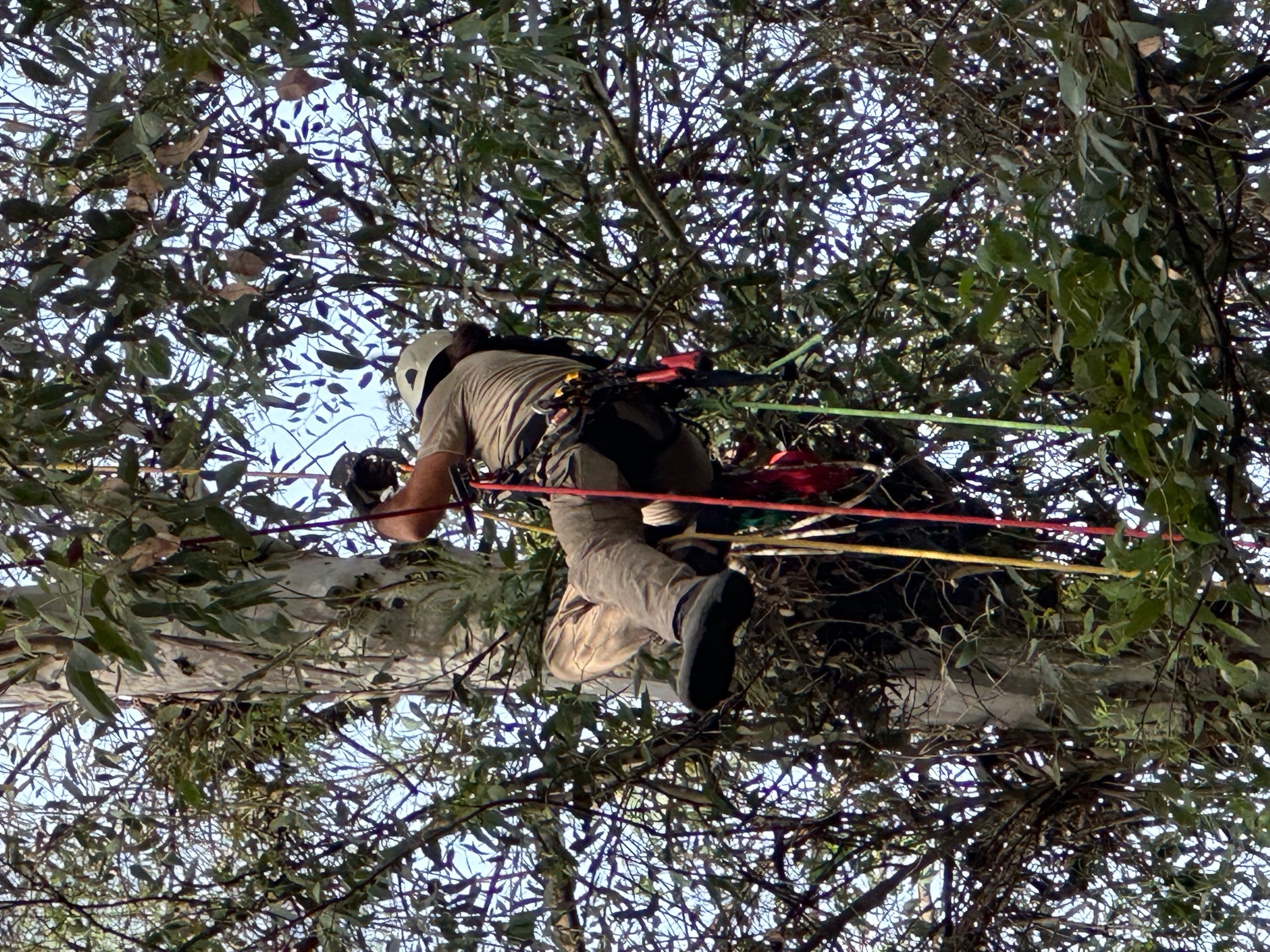Yesterday took place the first ringing of a chick of an European honey buzzard (Pernis apivorus) in Doñana. This is the first breeding record that has been confirmed for Doñana. Until now, there were observation records of adults in the breeding season, but nests and chicks had never been found in this natural area.
The European honey buzzard is a summer raptor that feeds mainly on bees, wasps and bumblebees, hence its name. The species is mainly distributed in the northern half of the Iberian Peninsula, while in the south it is scarce as a breeding species. So far, only two breeding records have been confirmed in Andalusia, according to data from the III Atlas of Breeding Birds in Spain by SEO BirdLife. The European honey buzzard spends winters mostly in Africa, with some individuals reaching as far as South Africa. They can bee seen in large numbers in the Strait of Gibraltar They migrate through the Strait of Gibraltar where they can be seen in large numbers.
The nest was found by Juan Báñez, reserve guard and was confirmed by Tomás Ponce, environmental agent of the Doñana Natural Area. The ringing was carried out by the Enviornmental Monitoring Team – Bird Group of the ICTS – Doñana Biological, with Rubén Rodríguez, José Luis Arroyo and Antonio Martínez and the help of Pablo Mateos, instructor of vertical works.






 Las altas temperaturas están provocando que las lagunas y las marismas de Doñana pierdan agua rápidamente
Las altas temperaturas están provocando que las lagunas y las marismas de Doñana pierdan agua rápidamente



